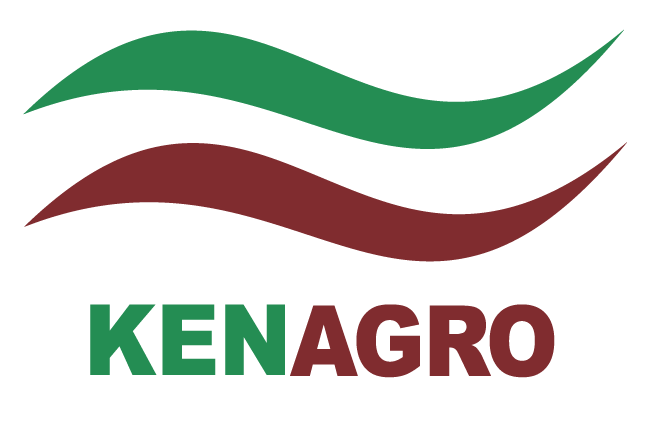Wheat farming in Kenya is a vital agricultural activity that significantly contributes to the country’s food security and economic growth. It is mainly practiced in high-potential wheat-growing regions such as Nakuru, Uasin Gishu, Narok, and Trans-Nzoia. When managed well, wheat farming can be a highly profitable agribusiness for both smallholder and commercial farmers. This guide explores the essential steps and best practices for successful wheat production in Kenya, covering everything from variety selection to marketing.
1. Crop Selection and Planning
The first step in successful wheat farming is choosing the right wheat varieties. Farmers should select certified wheat seeds suited to their region’s agro-ecological conditions. Popular wheat varieties in Kenya include Njoro BW1, Kenya Robin, Kwale, and Eagle 10. These varieties are known for their adaptability, disease resistance, and high yield potential.
It is also important to plan the wheat planting season carefully—rain-fed wheat should be sown at the onset of the long rains around May to June, while irrigated wheat can be planted year-round, depending on water availability.
2. Soil and Climate Requirements
Wheat in Kenya thrives in well-drained loamy or clay loam soils with a pH between 6.0 and 7.0. These soil types offer the essential nutrients and support strong root development.
The ideal climate for wheat farming in Kenya includes cool to warm temperatures ranging from 15°C to 25°C, along with moderate rainfall of 500–800 mm annually. High-altitude regions with good air circulation are ideal. Avoid waterlogged or compacted soils, which hinder germination and encourage root diseases.
3. Land Preparation and Planting Techniques
Proper land preparation is crucial for high wheat yields. Farmers should begin by ploughing the land thoroughly to break up soil clods and improve aeration. This should be followed by harrowing to create a fine seedbed.
For planting, use drill methods to ensure even seed distribution and efficient input use. The recommended wheat spacing is 20–25 cm between rows.
Apply basal fertilizer such as DAP during planting to boost early growth. Always use clean, treated seeds to prevent seed-borne diseases.
4. Crop Management: Irrigation, Fertilization, and Weeding
Efficient wheat crop management is essential for healthy growth and improved yield.
In areas with low rainfall, provide irrigation during critical stages like tillering and heading.
Use top-dressing fertilizers such as CAN or UREA around 4–6 weeks after germination to enhance plant vigour.
Weeding should be done early, especially within the first 6 weeks, to minimize competition for nutrients and water.
5. Pest and Disease Control
Wheat crops in Kenya are susceptible to several pests and diseases.
Common wheat pests include
- Aphids,
- Armyworms
- Russian wheat aphids
Major wheat diseases in Kenya include:
- Stem rust
- Leaf rust
- Stripe rust
- Powdery mildew
- Fusarium head blight
To manage these threats, plant disease-resistant wheat varieties, practice crop rotation, and apply recommended pesticides or fungicides.
Conduct regular field scouting to detect problems early and act promptly.
6. Harvesting and Post-Harvest Handling
Harvest wheat when the grains are hard and dry, and the crop has turned golden-brown—a sign of physiological maturity.
Use a combine harvester to improve efficiency and reduce post-harvest losses. After harvesting, dry the grains to below 13% moisture content to prevent mould and aflatoxin contamination.
Store wheat in clean, dry, and ventilated storage facilities or hermetic bags to avoid pest infestation and spoilage.
7. Marketing and Value Addition
Effective wheat marketing in Kenya is essential for profitability. Sell produce to local millers, grain processors, or via cooperative societies to negotiate better prices.
Explore value addition opportunities such as:
- Wheat flour milling
- Animal feed production
- Baking and food processing
Stay informed about market trends and establish buyer relationships before harvest to ensure timely sales and better pricing.
8. Farm Business and Record Keeping
Successful wheat farming in Kenya requires proper farm management and record keeping. Keep detailed records of:
- Input purchases
- Labor
- Pest and disease control
- Yields
- Income and expenses
These records help assess farm profitability, guide decision-making, and support access to credit, loans, or crop insurance.
Engage with agricultural extension officers, SACCOs, and government programs for additional support and training.
Unlocking the Potential of Wheat Farming in Kenya
Wheat farming in Kenya presents a significant opportunity for improving food security, increasing farmer income, and strengthening the agricultural economy. By choosing the right certified wheat seeds, applying proper land preparation, practicing effective pest and disease control, and adopting modern farming techniques, farmers can achieve high yields and greater profitability.
Combining these practices with efficient post-harvest handling and smart marketing strategies can transform wheat farming into a sustainable and successful agribusiness. With ongoing training, investment, and extension support, Kenyan wheat farmers are well-positioned to thrive and contribute to the country’s agricultural transformation.




